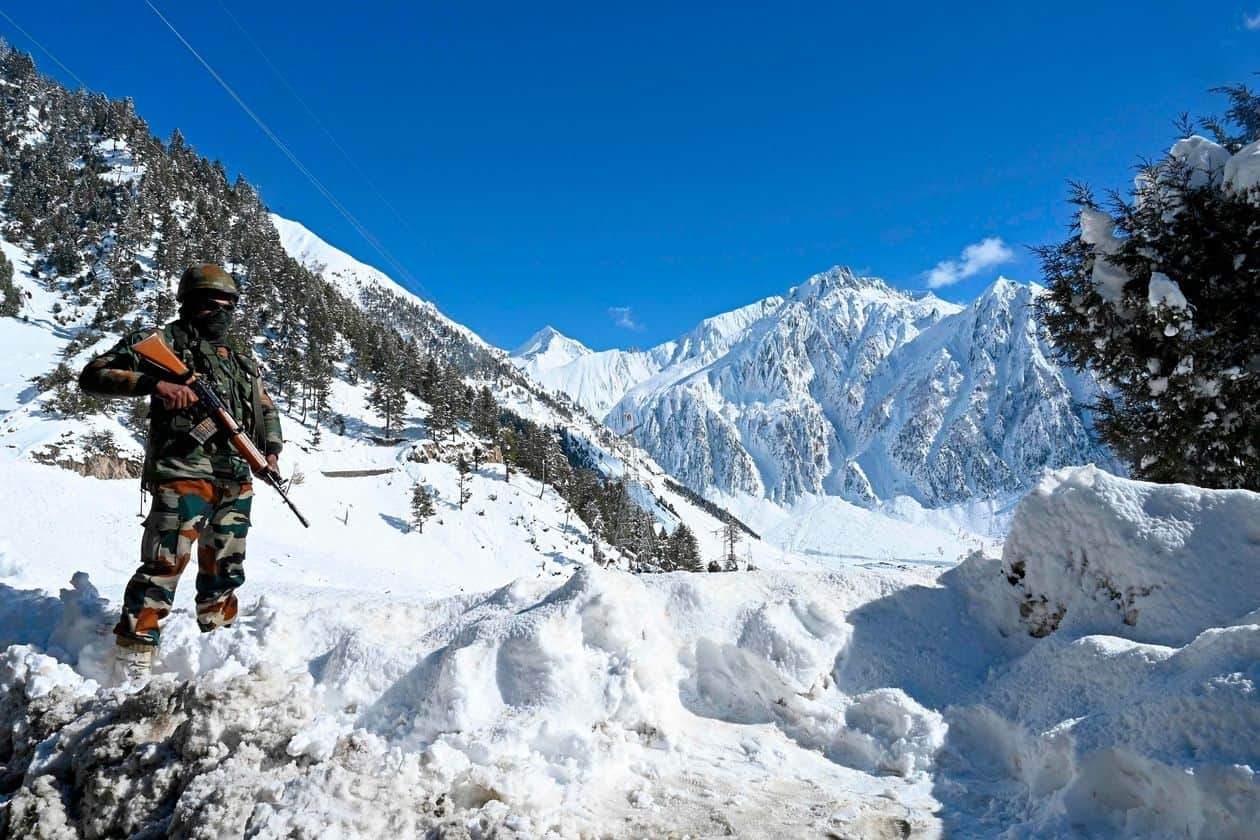India and China Troops Scuffle at Border

Indian and Chinese security forces had a scuffle along their disputed border in the Himalayas last week, the Indian army said Monday, in a development that could potentially escalate tensions and damage peace talks between the two countries.
Troops from the two nuclear-armed neighbors have been in eyeball-to-eyeball mode since last year following a deadly hand-to-hand combat in June that resulted in the death of 20 Indian soldiers in the eastern Ladakh region.
Since then, the two most-populous countries on the planet have deployed tens of thousands of troops, artillery and howitzers along their disputed borders that stretches from Ladakh to the northeastern state of Arunachal Pradesh.
The Indian army played down the latest skirmish, which happened on Jan. 20 near the high-altitude Nakula Pass in the northeastern Indian state of Sikkim, calling it a minor face-off.
The incident “was resolved by local commanders as per established protocols,” said the Indian army, which warned the media from “overplaying or exaggerating reports.”
According to a joint statement from the countries released Monday, “The two sides agreed to push for an early disengagement of the front-line troops. They also agreed to follow the important consensus of their state leaders, maintain the good momentum of dialogue and negotiation.”
Some Indian media reports said soldiers from both the sides suffered injuries in the clash but that there was no use of firearms.An Indian security official who declined to be identified said the incident happened while the Chinese forces were patrolling the area and tried to enter the Indian territory.
“Every time there is a patrol, Indian and Chinese forces would protest, which is better termed as a face-off, as boundaries aren’t resolved,” the official said. “It was one of those face-offs and not something serious.”
On Sunday, senior military commanders of India and China held talks to find a solution to the long-running stalemate.
A spokesperson at the Chinese embassy in New Delhi didn’t respond to a request for comment Monday evening.
India and China have had multiple rounds of talks to de-escalate tensions and see that their forces pull back from the front lines. However, the meetings haven’t solved the problem as troops continue to hold their positions even in the harsh winters with freezing temperatures.
“The latest clash is a reminder that animosity between the forces of the two nations is at its peak,” said N.C. Bipindra, a New Delhi-based defense analyst.
In recent years, many of China’s neighbors have grown increasingly concerned about Beijing’s growing assertiveness, particularly on territorial issues. Countries around the South China Sea, in particular, have expressed alarm about China’s willingness to bolster its claims there with the construction and arming of islands in those disputed waters.
Disputes along the more than 2,000-mile border between India and China have grown in the past decade, India says, as much of the border is contested and undefined. Some in India are worried that China is trying to slowly take control of more of the region a small slice at a time.
The two countries fought a war in 1962, a little more than a decade after their births—India in 1947 and the People’s Republic of China in 1949—over the delineation of their borders.
The border frictions haven’t triggered armed conflict in recent years, and both sides say they are determined to keep the peace. Still, analysts worry that more encounters between the two sides’ armed forces could lead to accidental escalation.
“Some loose cannon among the clashing soldiers could lead to more serious military conflict despite efforts by the highest military and diplomatic levels to disengage, de-escalate and de-induct from all the friction points,” Mr. Bipindra said.
In recent years, India has built new infrastructure, such as roads and arms installations, on its side of the disputed areas, attempting to catch up with earlier Chinese building.
At the heart of the dispute are competing complaints. China asserts claims over parts of India’s Arunachal Pradesh state, while India claims a region it calls Aksai Chin that connects Tibet with Xinjiang in northwest China. The two nations fought a war over the territory in 1962. More than a dozen rounds of talks since 2003 haven’t made much progress toward a settlement.
India and China have competing views of their de facto border, known as the Line of Actual Control. Both sides patrol up to their respective perceptions of the border, leading to frequent claims of transgressions.
Photo: Troops continue to hold their positions even in the region’s harsh winters. TAUSEEF MUSTAFA/AGENCE FRANCE-PRESSE/GETTY IMAGES











